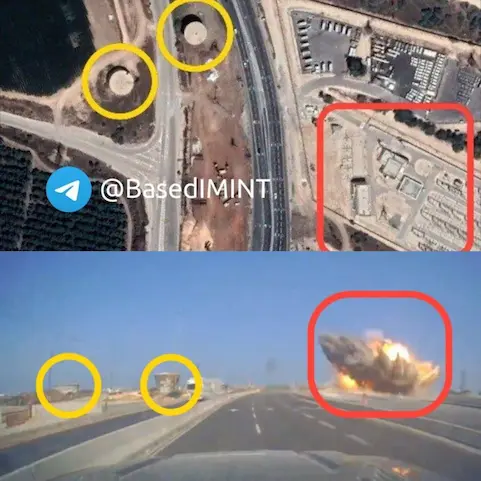
The fragile balance in the Middle East has shattered as US airstrikes on Iran’s nuclear facilities ignite a dangerous tit-for-tat between Tehran and Tel Aviv
The Spark: US Airstrikes on Iran’s Nuclear Heartland
Strikes Escalate – On June 22, 2025, the United States launched a dramatic military intervention in the Iran-Israel conflict, targeting three of Iran’s most fortified nuclear sites, Fordow, Natanz, and Isfahan, using B-2 Spirit stealth bombers and bunker-buster munitions. The strikes, described by President Donald Trump as a “historic moment,” aimed to cripple Iran’s uranium enrichment capabilities and prevent a potential nuclear breakout.
Table of Contents
The Fordow facility, buried deep within a mountain near Qom, was reportedly hit hardest. According to the UN nuclear watchdog, the damage was “very significant,” though independent verification remains pending due to restricted access. Iran’s Supreme Leader Ayatollah Khamenei condemned the attack as “a big mistake,” vowing that the “Zionist enemy is being punished right now”.
The US justified its action as a preemptive strike to neutralize Iran’s nuclear threat, but critics argue it has escalated an already volatile situation, drawing Washington directly into a regional war.
Retaliation Unleashed: Iran Strikes Back, Israel Responds
Iran’s response was swift and fierce. Within 24 hours, Tehran launched a barrage of missiles and drones, targeting Israeli cities including Ashdod, where a power station was struck, causing widespread blackouts and infrastructure damage. Additional strikes were reported in Haifa and Tel Aviv, with Iranian state media claiming the use of Fattah-1 hypersonic missiles and cluster munitions, a move that drew international condemnation.
In retaliation, the Israeli Defense Forces (IDF) launched Operation Rising Lion, striking six Iranian regime airports and destroying multiple fighter jets, helicopters, and missile storage facilities. The IDF emphasized that the strikes were aimed at degrading Iran’s ability to launch further attacks and maintain air superiority.
The Strait of Hormuz, a vital global oil artery, has emerged as a potential flashpoint. Iran’s Revolutionary Guards have threatened to close the strait, prompting warnings from the US and its allies about the economic consequences of such a move.
Global Shockwaves: Diplomatic Deadlock and Nuclear Fears
The escalating conflict has triggered global alarm, with the UN Secretary-General warning of a “dangerous escalation in an already volatile region”. The International Atomic Energy Agency (IAEA) has called for immediate access to the bombed nuclear sites, while Russia and China have condemned the US strikes as violations of international law.
Meanwhile, oil prices have surged, and global markets are jittery amid fears of a broader war. The closure of the Strait of Hormuz could disrupt nearly 20% of the world’s oil supply, triggering a global energy crisis.
Diplomatic efforts remain stalled. While the US insists its actions were defensive, Iran has vowed to continue its retaliation. Israel, for its part, has declared that it will not tolerate any threat to its sovereignty or security.
As the world watches, the stakes couldn’t be higher. With nuclear facilities bombed, cities under attack, and regional powers on high alert, the Middle East teeters on the edge of a full-scale war, one that could reshape the global order.
Conclusion:
The Iran-Israel conflict, now supercharged by US intervention, has entered a perilous new phase. What began as a shadow war has erupted into open confrontation, with devastating consequences for regional stability and global peace. As missiles fly and diplomacy falters, the world must ask: how close are we to the point of no return?
Stay updated with the latest news on Rapido Updates. Keep yourself updated with The World, India News, Entertainment, Market, Automobile, Gadgets, Sports, and many more
Ghost in the Sky: How the B-2 Spirit Redefined Modern Warfare with Unseen Power